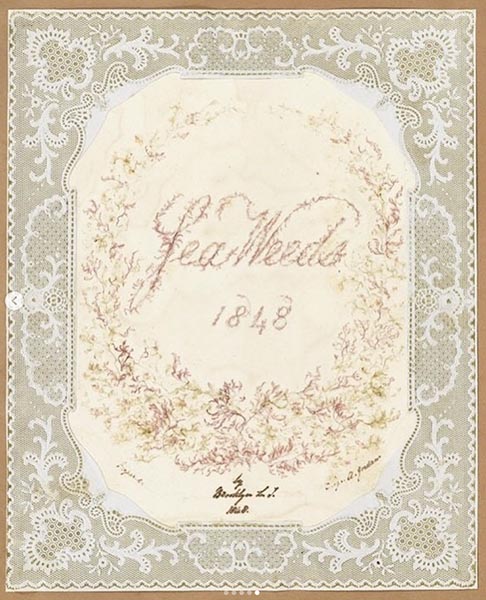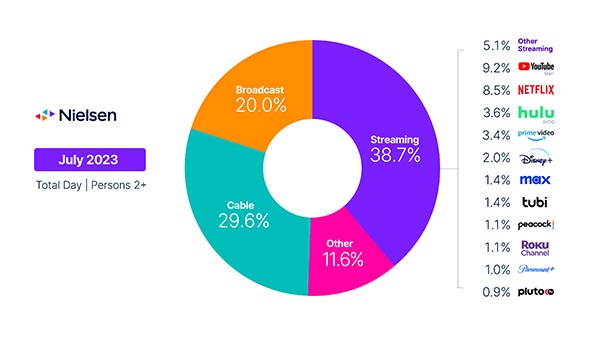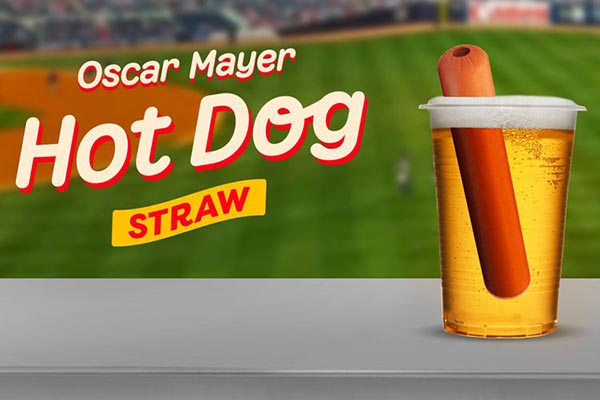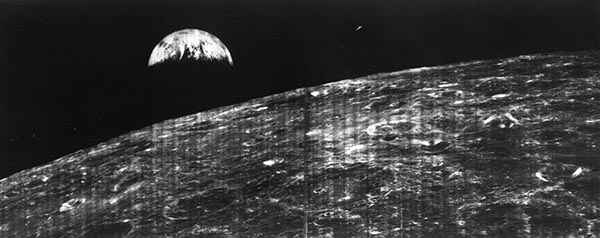Founders Day
Are you a type designer looking to find a better way to promote and sell your work? Via Print magazine, Monotype has launched its Foundry Program, a creative community for independent foundries and type designers.
Two years in the making, Monotype’s Foundry Program enables independent foundries and type designers with increased visibility to customers, a range of analytics tools and marketing features, and an enhanced royalty model to provide a consistent, scalable revenue stream. The program is free to join and designed to help partnering type designers realize the full value of their creative IP.
More than 1,000 type designers and foundries have joined thus far. For more info, check it out here.
50 Shades of Grayscale
If you have been to a bookstore recently and looked at the New Releases shelf, you may have wondered if there were only one cover designer left in publishing, as the majority of titles kind of look the same. (It’s not just us.) Apparently, sameyness is today’s design trend. Via Print magazine, even logos are starting to look like each other.
The second my Twitter app pivoted away from its bright blue bird logo to an industrial black and white “X,” I noticed that the rest of my home screen was riddled with a similar black-and-white design style.

Obviously, every era has broad trends in design, but BeReal.
“To consumers, black and white branding can say, ‘this is an established company’— it’s kind of a power move to move into an all black and white space, or even to start with one,’ shared Isa Segalovich, a graphic designer, multimedia artist, and writer for Hyperallergic. “Smaller brands often rely on colors to distinguish themselves from the noise— once you have an enormous corporation, you can shed those colors and say, ‘We don’t need these anymore to stand out. Everyone knows what an apple with a bite taken out of it means.’”
The TikTok logo was the first real example of this trend (although there are some subtle background colors) but apparently it caught on.
A study referenced in a recent Arch Daily article has revealed that vibrant tones are being used far less across the board, sending the world into a grayer state. The investigation also found that many more cars had previously been spangled in vivid hues than in the present day, while now an increasing number are coated in silver, black, and white.
(In the neighborhood above the Around the Web Cultural Accretion Bunker, any vehicle that is not a white SUV really sticks out.) The colors are draining away in other areas as well, such as interior design. We may bemoan the graying of the design world, but there could be an upside.
Suppose brands, specifically content-sharing-based brands, shift away from color— an easily recognizable and ownable design element. In that case, they’ll have to use typography, shapes, and patterns to define their brand through visual language. When color is no longer the driving force of design, something else will become the differentiating factor.
Another interesting repercussion may be that printer/ink manufacturers may not need to be so focused on hitting brand colors—if there aren’t any anymore. In fact, maybe monochrome printers/presses may return to their former state of prominence. If Coca-Cola or Home Depot goes grayscale—or if the colors drain away from those abstract, blobby book covers—we’ll know this trend is serious.
Plane Truths
The paper airplane is believed to have been invented more than 2,000 years ago in China—although originally it more resembled a kite. Which only makes sense, as it’s hard to fashion a paper replica of something that won’t exist for another two millennia. Popular Mechanics takes a look back at the origin and evolution of the paper airplane, and at how it has historically aided—and is still informing—knowledge about the mechanics of flight,
The British engineer and aviator Sir George Cayley reportedly crafted the first folded paper plane to approach modern specifications in the early 1800s as part of his personal experimentation with aerodynamics. “He was one of the early people to link together the idea that the lift from the wings picking up the aircraft for stable flight must be greater than or equal to the weight of the aircraft,” says Jonathan Ridley, PhD, the head of engineering and a scholar of early aviation at Solent University in the U.K.
And even the Wright Brothers started with paper airplanes well before they brought the real thing to Kitty Hawk.
Today, these lightweight aircraft serve as a source of inspiration not only for aviation enthusiasts but also for fluid dynamicists and engineers studying the complex effects of air on small aircraft like drones.
It seems they’re not just for classroom shenanigans after all.
Kelp Wanted
In the 19th century, a popular medium for art was marine algae, and algae artists (algaertists?) could create some quite beautiful images, and even lettering. Via Boing Boing:
People made abstract designs, bouquet arrangements, and representational scenes out of marine algae. Lovers of this craft often used the algae on paper to make these scenes as an alternative to paint.

Via Instagram:
The particularly fine examples featured here, using doilies as frames, are from an 1848 album presented to Augustus Graham, a member of the first board of directors of the Brooklyn Apprentice's Library, later to become the Brooklyn Institute of Arts and Sciences and the Brooklyn Museum. Made by a woman named Eliza A. Jordson, it contains — apart from the specimens of seaweed — an essay on the method of transferring the algae to paper, as well as a poem on the “flowers of the sea”.?
Pretty neat.
Department of Ironic Irony
Submitted without comment. Headline from Gizmodo: “Zoom CEO Says Employees Need to Be in the Office Because It’s Hard to Build Trust Over Zoom.”
Speaking of Zoom, what’s with the near-constant upgrades? And did you ever notice that the length of a Zoom upgrade is directly proportional to how late you are to a meeting?
Islands in the Streams
Signs o’ the times. From Variety:
Broadcast and cable TV dropped to a new low in July 2023 in terms of total share among American viewers — dropping below 50% of total TV usage in the United States for the first time, according to Nielsen.
Broadcast and cable are now apparently called “linear TV.”
Meanwhile, streaming services like YouTube and Netflix accounted for a record 38.7% of total U.S. TV usage, the category’s largest share reported in Nielsen’s The Gauge monthly report to date. Overall TV usage increased 0.2% during the month (and usage among audiences under 18 was up 4%).

As streaming platforms get steadily more expensive, it will be interesting to see if it has any impact on viewership/subscriptions.
Remove Funnybone
In this space last year, we linked to a story about how the original designer of the Nike “swoosh” got short-changed, selling the design for peanuts and not receiving royalties of any kind on one of the most iconic company logos in the world. This sort of thing happens a fair amount, and this week we came across, via Core 77, how the inventor of the technology behind the game Operation (you know, “the goofy game for dopey doctors”) similarly had his creativity carefully extracted without triggering an alarm.
John Spinello was an Industrial Design student at the University of Illinois in 1962. For a class assignment, he had to design a game that incorporated electronics—not an easy task at the time. What he came up with was a game called “Death Valley.” According to the Hasbro archives:
[The game] was metal with holes and crooked lines drilled through the top and came with a metal rod. Players had to have a steady hand to get the rod in the openings without touching the sides. If the probe did touch, a circuit would be completed between two oppositely charged metal plates and would set off a loud bell.
Sound familiar? A family friend worked for Marvin Glass Associates, the company behind the Lite-Brite, Mouse Trap, Rock ’Em Sock ’Em Robots, Simon, and other games, toys, and whatnot that populated homes in the 70s and 80s. He got Spinello a meeting with Glass, who offered Spinello $500 for the design, along with the promise of a job at the company when he graduated college. Adjusted for inflation, $500 was equivalent to about $5,100 today—not chump change for a college student in 1962. So, Spinello took it—in exchange for signing away all rights. And the job offer? Didn’t happen. Glass sold “Death Valley” to Milton Bradley, which turned it into Operation. And we know (or can guess) what a success it became.
In 2014, Spinello estimated the game had earned some $40 million. This was revealed in a HuffPost article with the depressing title, “John Spinello, Inventor Of 'Operation' Game, Can’t Afford Real-Life Operation.” Spinello’s health required surgery to the tune of $25,000, which he didn’t have.
Some fellow toy designers started a GoFundMe for Spinello and raised a little over $32,000. But there was a happier ending. In the 1980s, Milton Bradley had been acquired by Hasbro, which owns the rights to Operation today. And when they learned of Spinello’s plight, they helped out.
“Today we informed Mr. Spinello,” the company said in a statement in October of 2014, “that Hasbro plans to purchase the [“Death Valley”] prototype with the hope that the funds will help to defray his medical costs. We plan to proudly display it at Hasbro’s global headquarters in Pawtucket, RI to honor his contribution to Hasbro's gaming history.”
That’s pretty generous for a company had nothing to do with the original stiffage.
Adds Rain Noe of Core 77: “Moral of the story, if you’re an ID student or design entrepreneur and you invent a promising game: Consider crowdfunding it and retaining the rights for yourself.”
Spinello is still alive today and bears no ill will toward Glass or anyone. “I prefer not to dwell on that aspect and focus more on the joy that the game has brought to so many over the years.”
Now, if you want a really depressing rights rip-off story, check out the history of the song “The Lion Sleeps Tonight.”
Surely Graphene Is Joking, Mr. Feynman
Was it a good week for graphene news? It’s always a good week for graphene news! The famous physicist Richard Feynman once insisted that you could not harvest power from Brownian motion, or the thermal motion of atoms. But graphene may just be proving him wrong, according to a new study out of the University of Arkansas. From (who else?) Graphene-Info: “
Their study rigorously proves that thermal fluctuations of freestanding graphene, when connected to a circuit with diodes having nonlinear resistance and storage capacitors, does produce useful work by charging the storage capacitors.
… His current efforts in the development of this technology are focused on building a device he calls a Graphene Energy Harvester (or GEH). GEH uses a negatively charged sheet of graphene suspended between two metal electrodes. When the graphene flips up, it induces a positive charge in the top electrode. When it flips down, it positively charges the bottom electrode, creating an alternating current. With diodes wired in opposition, allowing the current to flow both ways, separate paths are provided through the circuit, producing a pulsing DC current that performs work on a load resistor.
… Because GEH circuits are so small, mere nanometers in size, they are ideal for mass duplication on silicon chips. When multiple GEH circuits are embedded on a chip in arrays, more power can be produced. They can also operate in many environments, making them particularly attractive for wireless sensors in locations where changing batteries is inconvenient or expensive, such as an underground pipe system or interior aircraft cable ducts.
Electric Prunes?
Are you ready for electric fruits and vegetables? Via the BBC, electric horticulture is coming down the wire.
Salvalaio and Sena’s [researchers at the Plant Morphogenesis Laboratory at Imperial College London] experiment is one of a growing global constellation of projects that aim to boost agriculture using a variety of electrical interventions. The last decade or two have seen a proliferation of ways to electrically stimulate seeds, crops and fields: increasing yield under the influence of an electric field; shocking seeds to hasten germination; even zapping the water they are doused with. In the US, the National Science Foundation (NSF) has given millions of dollars to research the agricultural uses of cold plasma – essentially controlled lightning delivered at room temperature.
In China, the government is backing agricultural projects that use giant rigs to draw electricity into the soil to boost crop yields. In Canada, a commercial grower has been experimenting with cold plasma to fertilise its lettuces. Now startups are entering the scene, like Vivent, a Swiss company whose "EEG" can eavesdrop on plants' inner electrical lives and is being aggressively courted by the ag industry. Even the organic gardening influencer community is sniffing around the trend.
Supposedly, electroculture can boost crop yields and even improve flavor.
In his experiments, Volkov saw increases in harvest of 20-75%, depending on the plant. Treating seeds in plasma for less than a minute led to a 40% increase in potato harvests. “One cabbage farm let us experiment, to get statistics,” says Volkov. “We increased cabbage production by 75%. It also tasted better.” The flavour, he said, was sweeter.
And more cabbage can lead to more lettuce, if you know what we mean.
Building Blocks
This is cool. From The Guardian:
Lego is to begin selling bricks coded with braille to help blind and partially sighted children learn to read the touch-based alphabet.
The Danish toymaker has been providing the specialist bricks, which were tested and developed in partnership with blind organisations around the world, free of charge to a selection of schools and services catering for vision-impaired children since 2020.
From next month, shoppers will be able to buy packs of the bricks, which have studs corresponding to the braille version of numbers and letters with a printed version of the symbol or letter below, to use at home.
The only downside is that they’ll probably really hurt when you step on them.
Casein Point
We did not know that there can be such a thing as “fake parmesan cheese.” And by “fake” we don’t mean “artificial.” Apparently, in order to be called “parmesan,” it must be a product of the Parmigiano Reggiano Consortium (PRC)—a big wheel in the cheese industry. As The Guardian tells us:
The cheese, which can trace its history back to the middle ages, gained the EU’s prized protected designation of origin (PDO) status in 1996. Under those rules parmigiano reggiano – the only kind which can be called parmesan within Europe – must be made in a small part of northern Italy, including in the provinces of Parma and Reggio Emilia.
Kind of like “champagne,” which technically isn’t a generic term for sparkling wine, but must come from the Champagne wine region of France and be produced according to its standards. But as you might expect, the PRC has been fighting the “fake parmesan” wars since its inception. Parmesan is apparently the most counterfeited cheese in the world, and the PRC is now turning to anti-counterfeiting technology to help protect its cheese.
Now producers have been trialling the most modern of authentication methods – microtransponders about the size of a grain of salt inserted into the labels found on the rind of 120,000 wheels of parmigiano reggiano. The microchips are food-safe, but are unlikely to be eaten, given their location in the cheese’s hard skin, which is made from the milk protein casein.
The chips work as long-lasting, scannable food tags that allow consumers to track their product back to where it originated. Made by the US company p-Chip Corporation, they are embedded directly into a QR code label, and function like “tiny digital anchors for physical items”, according to the company.
The PRC may be the only ones who care, but this does demonstrate how new labeling technologies can try to solve age-old problems.
Straw Man
One viral phenomenon we’re glad we missed was the “Hot Dog Straw” video, in which a guy at a baseball game turned his hot dog into an ersatz straw through which he drank his beer. You know, you can’t buy class. Some days, we’re glad the 28.8 Kbps modem we have installed here in the Bunker doesn’t let us play online videos.
It’s apparently the one-year anniversary of that video, and the fact that someone is commemorating it suggests that the Apocalypse is imminent. At any rate, via Food & Wine, Oscar Mayer—who naturally perks up at any meme involving hot dogs—is commemorating Hot Dog Straw with, yes, a hot dog straw.
No, the brand isn’t releasing actual edible hot dogs with strawlike holes.
Mercifully.
Instead, it used the mighty dog as its muse to create silicone masterpieces that look just like the real thing, which you can use over and over.

This is so wrong on so many levels. And who drinks beer through a straw anyway?
“While the viral ‘Hot Dog Straw’ divided the internet
What doesn’t?
we salute the brave man who paved the way to enjoy his hot dog as he wishes,” Kelsey Rice, the associate director of Oscar Mayer, shared in a statement provided to Food & Wine.
Thankfully, it’s not easy to get.
Not everyone will be able to get their hands on this super limited-edition release. However, if you want to try, then Hot Dog Straw is now available for pre-order nationwide at oscarmayer.com/hotdogstraw. All you need to do is pop in your information, and the brand will notify you when the hot dog straws are available. (The straws are also free, Oscar Mayer just needs you to get in its digital line to obtain one.)
To be fair, we do like the idea of a reusable straw vs. disposable plastic ones. Still, we shudder to think what memes it will generate…
This Week in Printing, Publishing, and Media History
August 21
1888: The first successful adding machine in the United States is patented by William Seward Burroughs.
1952: English singer-songwriter and guitarist Joe Strummer born.
1961: Motown releases what would be its first #1 hit (in America), “Please Mr. Postman” by The Marvelettes.
2005: American businessman, founded Moog Music Robert Moog dies (b. 1934).
August 22
1485: “A horse! My kingdom for a horse!” The Battle of Bosworth Field, the death of Richard III and the end of the House of Plantagenet.
1849: The first air raid in history. Austria launches pilotless balloons against the city of Venice.
1862: French pianist and composer Claude Debussy born.
1893: What fresh hell is this: American poet, short story writer, critic, and satirist Dorothy Parker born.
1902: Theodore Roosevelt becomes the first President of the United States to make a public appearance in an automobile.
1920: American science fiction writer and screenwriter Ray Bradbury born.
1971: American singer-songwriter and guitarist Craig Finn born.
August 23
1946: English drummer, songwriter, and producer Keith Moon born.
1966: Lunar Orbiter 1 takes the first photograph of Earth from orbit around the Moon (not Keith).

1973: A bank robbery gone wrong in Stockholm, Sweden, turns into a hostage crisis; over the next five days the hostages begin to sympathize with their captors, leading to the term “Stockholm syndrome.” (Some trade shows are like that.)
1991: The World Wide Web is opened to the public.
August 24
1456: The printing of the Gutenberg Bible is completed.
1891: Thomas Edison patents the motion picture camera.
1995: Microsoft Windows 95 is released to the public in North America.
1998: First radio-frequency identification (RFID) human implantation is tested in the United Kingdom.
August 25
1609: Galileo Galilei demonstrates his first telescope to Venetian lawmakers.
1835: The first Great Moon Hoax article is published in The New York Sun, announcing the discovery of life and civilization on the Moon. (No one would ever fall for something like that today.)
1867: English physicist and chemist Michael Faraday dies (b. 1791).
1900: German philologist, philosopher, and critic Friedrich Nietzsche dies (b. 1844).
1954: English singer-songwriter, guitarist, and producer Elvis Costello (né Declan MacManus) born.
1991: Linus Torvalds announces the first version of what will become Linux.
2012: Voyager 1 spacecraft enters interstellar space becoming the first man-made object to do so.
August 26
1740: French inventor (hot air balloon) Joseph-Michel Montgolfier born.
1873: American engineer and academic and inventor the Audion tube Lee de Forest born.
1952: American journalist and puzzle creator Will Shortz born.
August 27
1770: German philosopher and academic Georg Wilhelm Friedrich Hegel born.
1871: American novelist and journalist Theodore Dreiser born.
1933: The first Afrikaans Bible is introduced during a Bible Festival in Bloemfontein.
1953: Canadian singer-songwriter, guitarist, and producer Alex Lifeson (né Alexandar Zivojinovich) born.
1971: American publisher, co-founded Random House Bennett Cerf dies (b. 1898).















Discussion
Only verified members can comment.